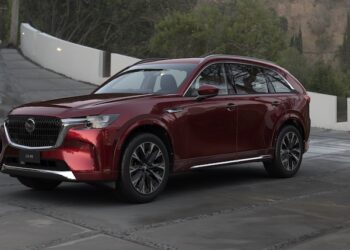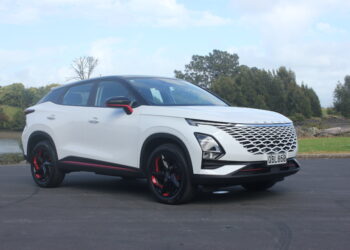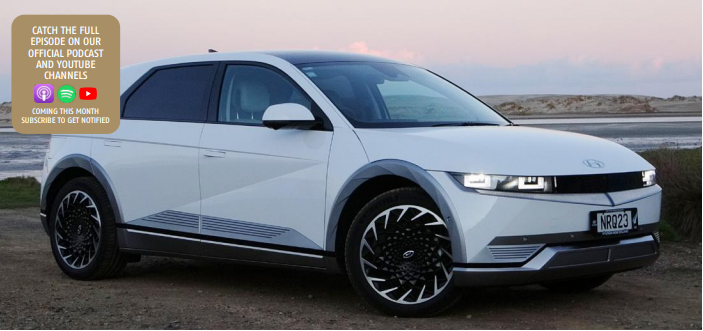
Concept cars are usually called ‘concept’ rather than ‘production’ for a reason.
They’re often style over substance, or feature items that will never make it into a customer’s hands because of cost, safety, or simply an inability to put them into production.
Hyundai appears to be throwing that longheld concept in the bin lately. Cars seem to pop up looking too cool for showroom floors, only to turn up in reality far quicker than we’re used to seeing.
The Ioniq 5 is a prime example, so is the Staria van and I suspect the Ioniq 7 will land on us in a similar way.
It’s hard to argue that the Ioniq 5 looks futuristic, with its sharp, clean edges, squared, digital-effect lighting and unique proportions. I’ve loved its look since Hyundai unveiled it.

Sure, it hints to the original Pony, but I think it will be an iconic design in its own right.
Is it a hatch or is it an SUV? Opinions are mixed, but I say a big hatch.
And there’s nothing wrong with that. Hatches are great, hatches are practical, and ones that perform are literally ”hot”.
Its dimensions are a trick of the eye. It’s far bigger than a Kona, and shares its wheelbase with the larger Santa Fe.
It’s a few centimetres shorter than a Tesla Model 3, but 4cm wider and 15cm taller.
The effect is that it looks little bigger than a Leaf from a distance, and about the same size as a Model 3 close-up, but beats both massively on interior dimensions.
This is a car that can easily pull not just daily, but also holiday duty for a family of four in comfort.
Yes, there is a frunk… but it’s tiny.
The design creates one usability plus and one usability minus. The plus is the boot, the square number and door makes for a wide, flat entrance to the load bay.
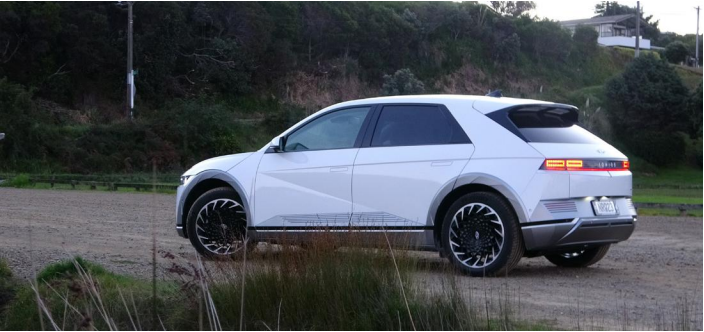
The minus? The rear door outer shell is bigger than the opening and makes the door longer than it needs to be.
This makes getting in and out a little tougher in tight spots, and I had to use caution around my toddler when she was rushing to get in the car.
Inside, Hyundai has gone to town on the details. There are reflections of the square light elements everywhere, and two huge LCD screens, which I would argue also reflect the large instrument panels of late 1970s vehicles.
The seats are not modern, shaped and sculpted, and having a slight “plush sofa” look and feel to them.
The front seats recline into loungers with leg rests when you’re charging, but the compromise is they eat any space in the rear.
For example, with a child’s car seat in place, or even my camera bag in the rear footwell, reclining to anywhere near full levels is impossible.
The Ioniq 5 does have a light, airy feel to it – not something I expected considering the shape of the car. That’s enhanced by light colour interior choices in the test car.
It’s a very relaxing place to be in spite of all the tech. Want to enhance your relaxation? The 5 will even play you relaxing sounds (great for keeping a toddler asleep).
And that’s without a sunroof. Our Limited AWD featured the solar roof which can provide a few hundred watts of charge to the 12-volt battery and then the traction battery.
Storage space abounds. There’s a sliding centre console with a decent capacity, lots of cubbies and pockets.
And then there is the boot, offering 531 litres of trunk space that increases to nearly 1600 litres when the second-row seats are fully folded.
Second-row seats can slide forward up to 135mm and can be folded in a 6:4 ratio.
And yes, it can tow. Up to 1600kg, so hello boat ramp for small boats.
CHOICES, CHOICES
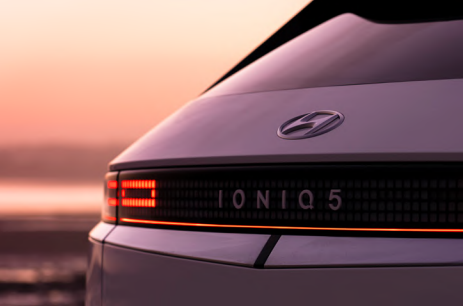
Hyundai New Zealand is offering six different versions of the Ioniq 5, allowing you to formulate a combination that works for you, whether your need is range, all-wheel drive grip, performance, or you just want everything.
The range starts at a subsidy-collecting $79,990 for the 58kWh two-wheel drive, topping out at $112,990 for the 72.6kWh allwheel drive Limited model with solar roof.
If I had to choose one, it would be the Elite specification in two-wheel drive with the bigger battery.
It will give you solid performance, rearwheel drive dynamics and a chunky 480km range – and Hyundai is known for delivering real world range that gets closer to matching claims than any other.
Still, that entry level model is compelling. Sure, delivered you are looking at around $9000 more than a Model 3, but you’re getting significantly more usable space and more real world range.
I’m looking forward to driving that one, but for now my experience has been restricted to the full-fruit Limited.
And it impresses. Its front and rear motors produce a combined power output of 225kWh and 605Nm of torque, and it can reach 100 km/h in 5.2 seconds.
Throttle response is crisp, and the steering is fairly engaging for an SUV/hatch. Sure, it doesn’t match the sportier sedans, but it offers far more ride comfort.
The Limited has a full suite of driver assistance programs, and they are solid offerings.
The adaptive cruise system will slow you using regen when you come up behind other cars, even when not engaged, something Kona owners already report loving.
The lane keep is accurate but won’t entirely drive the car through tighter corners. It’s not really supposed to.
Charging is where the Ioniq 5 should outpace rivals. It has an 800 Volt battery allowing faster charging on hyper-chargers, with a converter allowing the car to charge normally on the 50kW units that make up the bulk of our charging network.
I didn’t get the chance to try it on a highspeed charger but will do soon.
With a 350kW charger, the Ioniq 5 can charge from 10% to 80% in 18 minutes, only needing five minutes’ charging to get 100km of range.
It also has a vehicle-to-load (V2L) function, allowing customers to use or charge any electric devices, like electric bicycles, scooters or camping equipment, serving as a charger on wheels.
The V2L function can supply up to 3.6kW of power with one port under the second-row seats and another at the charging port on the vehicle exterior.
THE NZ EV?
The Ioniq 5 has some lovers and haters online. Many love its forward-thinking but backward-looking design and solid engineering. Others criticise it for being too expensive and well, not a Model 3.
I may agree it’s a little pricey, but only a little, and keep in mind that unlike a Tesla dealer, Hyundai may be able to work with you to get a deal over the line.
For people stressed about service and warranty Hyundai dealers are everywhere and are known to back their vehicles.
If you look at where the NZ market is right now, this is a car that is more in line with what people want.
Kiwis buy utes and small SUVS. This is, arguably, the latter, and it can tow, sort of covering the latter.
This really is a piece of the future you can have today.





